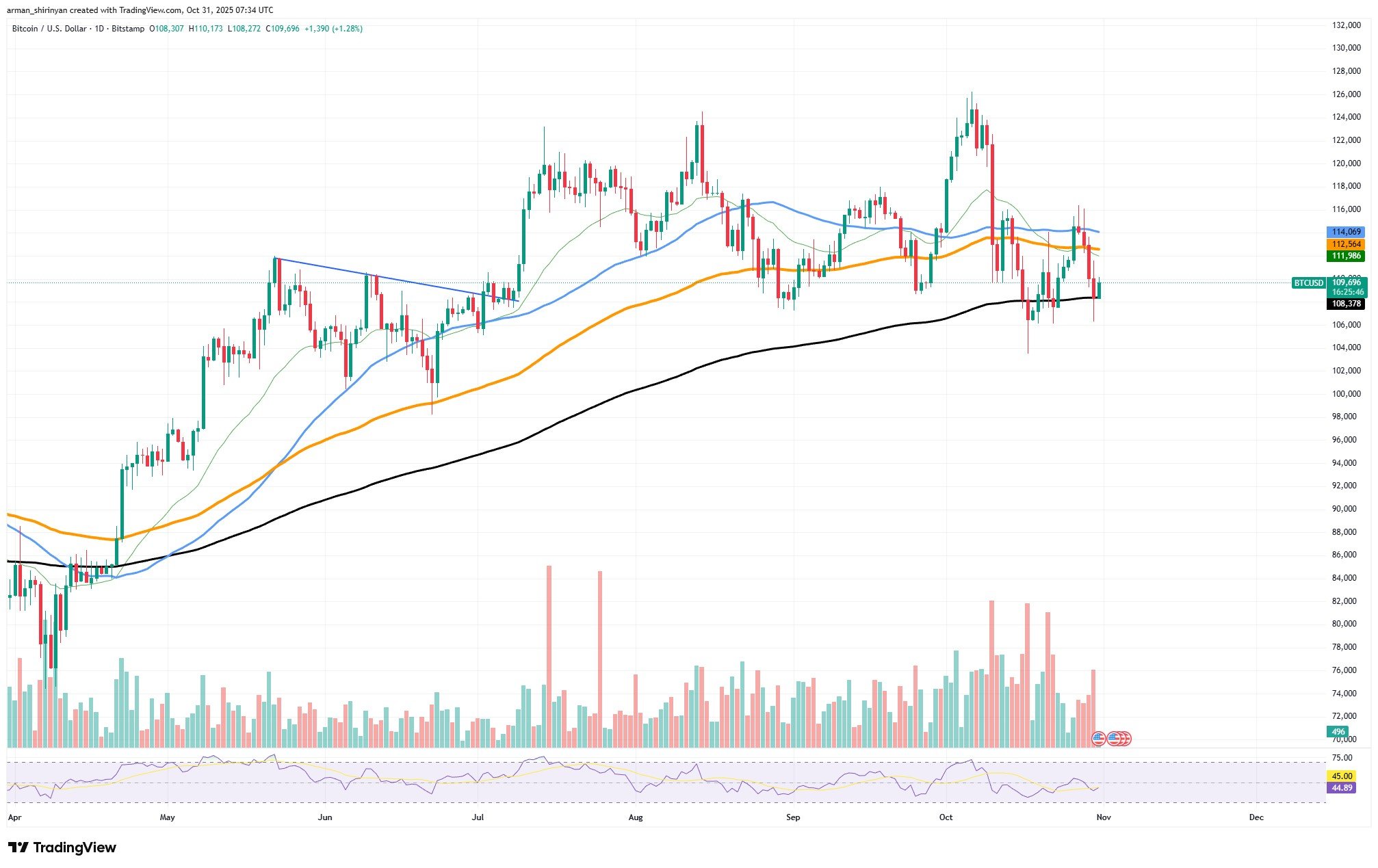Crypto market dips are a natural part of trading, as Binance founder Changpeng Zhao warns, with Bitcoin hovering around $109,000-$110,000 and Ethereum near $4,000 amid signs of exhaustion after recent gains. Expect volatility, but long-term bullish trends may persist if key supports hold.
-
Bitcoin’s current position: Trading between $109,000 and $110,000 near the 200-day moving average, a vital support level facing resistance at $114,000.
-
Ethereum mirrors this pattern, consolidating below $4,000 after rejections at its 100-day moving average, with support at $3,600.
-
Market indicators like RSI around 45 for Bitcoin and 43 for Ethereum suggest potential pullbacks before rebounds, aligning with CZ’s advice on frequent dips.
Discover why crypto market dips loom for Bitcoin and Ethereum in 2025, per Binance’s CZ. Analyze charts and expert insights for smarter trading strategies today.
What Are the Signs of Upcoming Crypto Market Dips?
Crypto market dips are evident in the current exhaustion of Bitcoin and Ethereum after prolonged upward momentum, as highlighted by Binance founder Changpeng Zhao. Bitcoin trades between $109,000 and $110,000, testing the 200-day moving average as a key support, while failing to break $114,000 resistance multiple times. Ethereum, similarly, hovers just below $4,000, rejected by its 100-day moving average and supported at $3,600, signaling short-term volatility amid broader bullish outlooks.
The Relative Strength Index (RSI) for Bitcoin sits neutrally at around 45, indicating room for a pullback before entering oversold territory. This setup supports Zhao’s reminder that dips are inevitable, even in bullish phases, helping to reset market leverage and eliminate weaker positions. Traders should monitor these levels closely, as a failure to hold support could lead to deeper corrections, though historical patterns suggest recoveries follow such events.
How Do Technical Indicators Influence Ethereum’s Price Movement?
Ethereum’s price action closely parallels Bitcoin’s, with its RSI at 43 pointing to subdued momentum and potential for further downside. The cryptocurrency has consolidated above the $3,600 support but faces resistance near the 100-day moving average. A confluence of the 200-day moving average around $3,400 to $3,200 could act as a deeper correction zone if selling pressure intensifies.
According to data from TradingView, Ethereum’s failure to reclaim $4,200 would reinforce bearish short-term sentiment, while a break above could signal renewed bullishness. Expert analysis from market observers, including those at financial platforms like CoinMarketCap, emphasizes that such indicators often precede volatility resets. Short sentences like this highlight the need for caution: Ethereum’s structure demands patience from investors eyeing long-term growth.

Bitcoin’s chart, as shown, illustrates the struggle around the 200-day line, with thinning buy orders potentially driving prices toward $106,000 or $102,000. This visual confirmation underscores the broader market’s fatigue, where dips serve as healthy adjustments rather than outright reversals.
Zhao’s perspective, drawn from his experience leading Binance—the world’s largest cryptocurrency exchange—adds credibility to these observations. In a recent statement, he noted that markets rarely ascend linearly post-bear cycles, a view echoed by analysts at Bloomberg who track crypto trends. This realism helps demystify volatility, reminding traders that corrections shake out overleveraged positions before sustainable uptrends resume.
Broader market context includes macroeconomic factors like interest rate expectations and regulatory developments, which influence crypto sentiment. For instance, Federal Reserve signals on policy could amplify dips, as reported in plain-text references from economic outlets. Yet, on-chain metrics, such as increasing holder counts for both assets, suggest underlying strength despite technical hurdles.
Frequently Asked Questions
What Causes Crypto Market Dips After Bullish Runs?
Crypto market dips often stem from profit-taking, reduced buying pressure, and technical resistance levels after extended gains. For Bitcoin and Ethereum, current exhaustion follows months of momentum, with RSI indicators showing neutrality. These events reset leverage, as Changpeng Zhao points out, preventing overconfidence and paving the way for healthier recoveries.
Will Bitcoin Hold Its 200-Day Moving Average Support?
Bitcoin’s position around $109,000 to $110,000 tests the 200-day moving average, a historically reliable long-term support. If it holds, expect stabilization; otherwise, a drop to $106,000 is possible. This level has supported rebounds in past cycles, offering a natural entry point for patient investors seeking voice-search clarity on market dynamics.
How Should Traders Prepare for Ethereum Corrections?
Traders can prepare for Ethereum corrections by setting stop-losses below $3,600 and watching the 200-day moving average near $3,200. Diversifying holdings and avoiding high leverage aligns with CZ’s advice on dips. Monitoring volume and RSI changes provides early warnings, ensuring strategies adapt smoothly to natural market fluctuations.
Key Takeaways
- Monitor Key Supports: Bitcoin’s 200-day average at $110,000 and Ethereum’s $3,600 level are critical; breaches could signal deeper dips.
- Embrace Volatility: CZ’s warning highlights that dips reset markets, removing weak hands and setting up stronger rallies.
- Stay Informed: Use technical tools like RSI and on-chain data for decisions, focusing on long-term bullish trends over short-term noise.
Conclusion
In summary, crypto market dips for Bitcoin and Ethereum reflect typical post-momentum exhaustion, as technical indicators and Binance founder Changpeng Zhao’s insights affirm. With Bitcoin near $110,000 and Ethereum below $4,000, traders must navigate volatility while eyeing robust long-term supports. As markets evolve in 2025, staying vigilant with data-driven analysis will position investors for the next upward phase—consider reviewing your portfolio strategies now to capitalize on potential rebounds.
